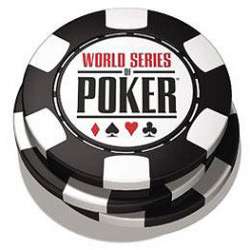 Event 6 of this year’s World Series of Poker, $1,500 Limit Hold’em, is our first LHE event this year. Limit events rarely bring out large fields, but with it still being a Hold’em tournament, 675 players registered to play.
Event 6 of this year’s World Series of Poker, $1,500 Limit Hold’em, is our first LHE event this year. Limit events rarely bring out large fields, but with it still being a Hold’em tournament, 675 players registered to play.
A very interesting story developed in what would have otherwise been an event that flew under the radar. On the final day of play, defending champion Matt Matros was still in the field when the final 15 players came back. If winning a WSOP bracelet is a once-in-a-lifetime opportunity for most people, what would winning the same one twice in a row be?
Sadly, though, he was not able to successfully do so. Exiting in 11th place, Matros, a published poker author, went to the cage, picked up his $12k, and went to find another game to play. There’s always next year, right?
With a prize pool set at just above $900,000, almost $3,000 went to anyone who finished among the final 63. With it being a limit event, many of those who turned a profit are unknown to the mainstream poker media. However, many popular pros still represented, including Dutch Boyd, JJ Liu, and a man with a shot at winning his 3rd WSOP bracelet, Scott Clements.
None of them had enough, however, to overtake eventual champion Harrison Wilder. Taking home the bracelet and $205,065, Wilder made sure not to be one of those unknown names any longer. With many limit events still on the schedule this year, I would not be surprised to be writing about him again over the next couple months.

